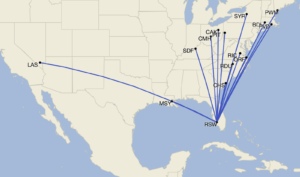“I know every airline is feeling the pressure to deliver and be there as we go into the holidays.”
That’s the word from U.S. Secretary of Transportation Pete Buttigieg, who gave TPG a wide-ranging interview on the state of travel and travel infrastructure as the Joe Biden administration marks the two-year anniversary of the Bipartisan Infrastructure Law, which was signed into law Nov. 15, 2021. The full video of the interview is at the bottom of this article.
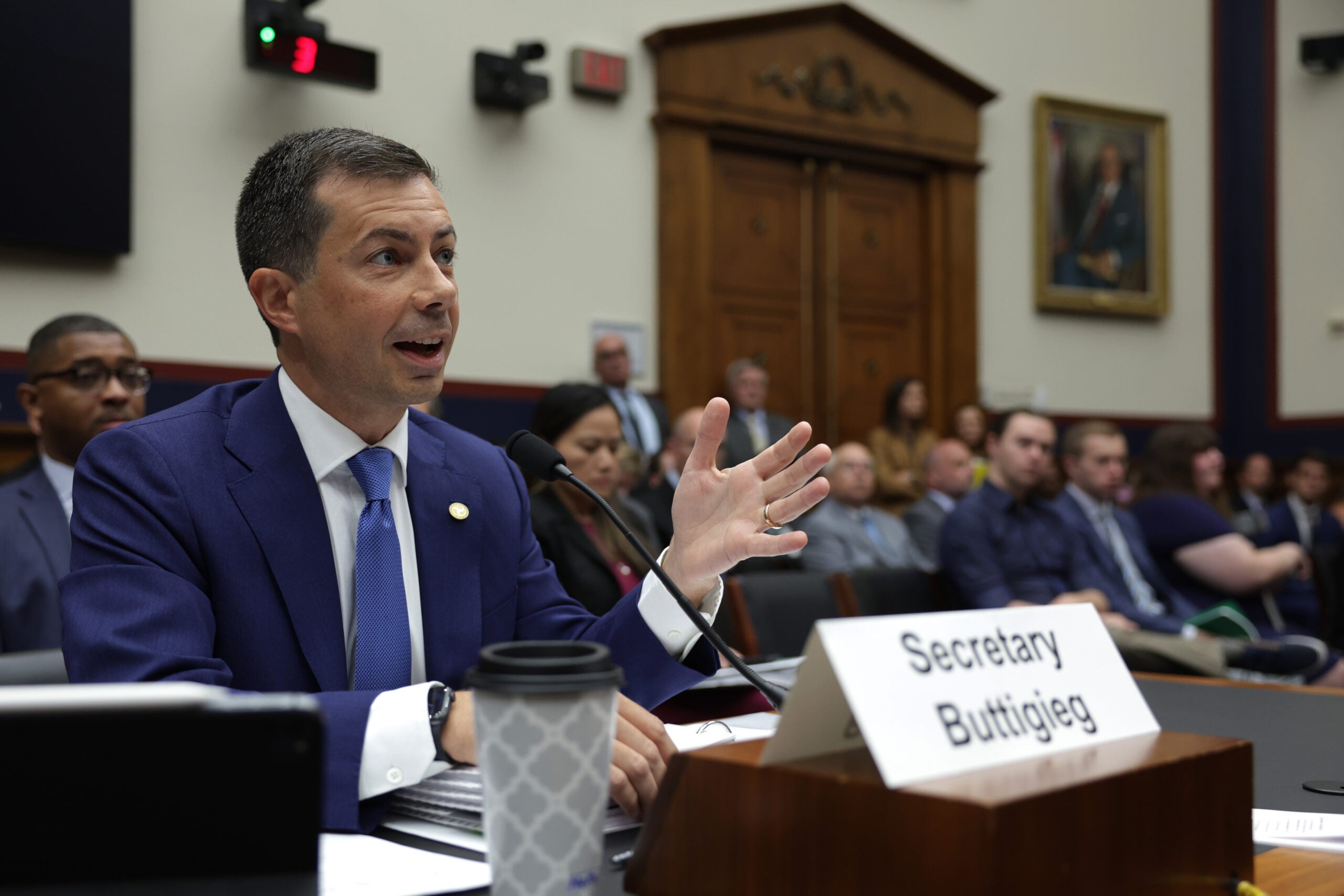
The secretary not only talked about how airlines are doing recovering from delays and cancellations but also about the shortage of air traffic control workers, the administration’s work on passenger rights and how the massive infusion of funds from the infrastructure law is rolling out to the nation’s ports, trains, airports and other major construction projects.
How will airlines perform this holiday season?
When I mentioned that the summer went fairly smoothly in terms of delays and cancellations, Buttigieg told me that the airlines are in much better shape heading into the holiday season. He said we’ve seen dramatic improvements on two fronts.
“One is the performance itself, so people don’t get stranded,” he said, “and then the second is customer protection for what happens if you do get stranded.”
“Both of those have advanced light years in the last year and a half or two years,” Buttigieg noted, adding that the administration’s action on passenger protection and flyer rights “has clearly made a big difference in what you can expect when you do experience a disruption.”
Related: Airlines pushed again by DOT to be better on delays and cancellations
“Of course,” he continued, “what we really prefer is not to have that disruption happen in the first place, and I think our pressure on the airlines as well as a willingness to work with the airlines when we can help with, for example, more efficient routing or other operational improvements in air traffic control are all part of the reason why this year we got to a cancellation rate that’s actually lower than before the pandemic, even as we saw an all-time record high in terms of the number of passengers traveling over the summer holidays.”
Buttigieg said that as we go into the winter holidays, the Biden administration will closely watch how the airlines perform to ensure fewer people have disruptions.
Last year, the airlines had major meltdowns as winter storms kicked off days and, in some cases, weeks of delays and cancellations. Southwest Airlines was the carrier that struggled the most to recover, and Buttigieg told me he has assurances that things will be better this year.
“The CEO of Southwest just briefed me on the steps they are taking that he has committed will make sure that what that particular airline went through last year won’t happen again,” Buttigieg said. “And I know every airline is feeling the pressure to deliver and be there as we go into the holidays.”
Regardless, Buttigieg pledged that the Department of Transportation will keep a close eye on how the airlines perform in the event there is another weather disruption this season.
I also asked the transportation secretary whether he would support a stronger passenger bill of rights or something similar to what Europe has with EU261, where passengers are required to be compensated in the case of long delays or cancellations.
“We’re working on that right now,” Buttigieg said. “We’ve begun the regulatory process that would make it possible to get that compensation in the case of extreme delay.
“Right now, there’s no requirement for that,” he continued. “You can count on a refund in the case of a cancellation but not necessarily in the case of a delay. It’s up to the airline, and some airlines are more consistent than others in terms of how they take care of people. We do believe there ought to be a baseline.”
He said public comment on new Department of Transportation rules for passenger compensation will open soon, and he suspected passengers would have a lot to say.
Air traffic controller shortages
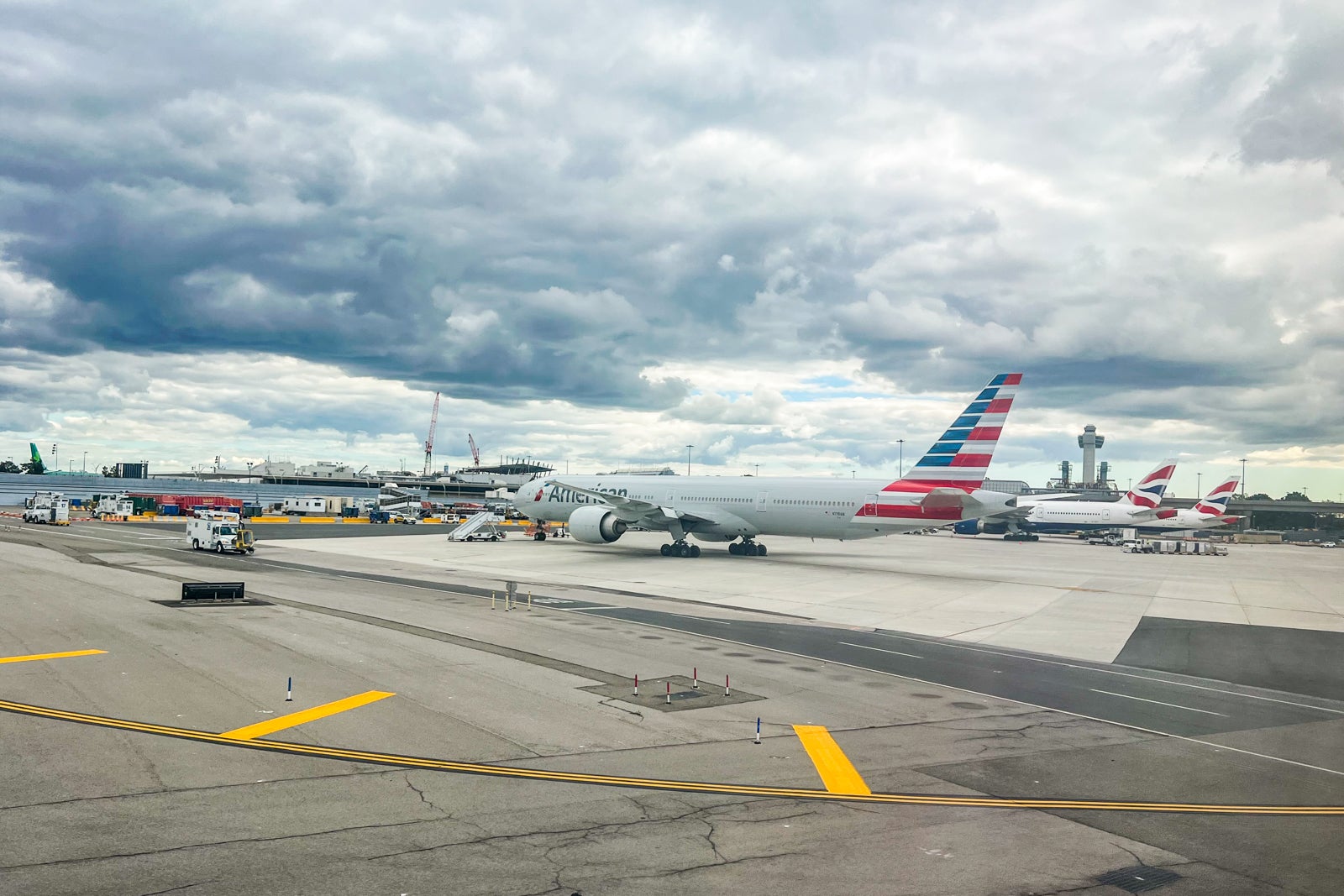
Buttigieg struck a more cautious tone on another issue that has snarled air travel over the past few years.
“We’ve made progress, but there’s a long way to go,” he said about what’s become a well-documented shortage of air traffic control workers.
Buttigieg took the opportunity to stress this was one of many reasons why the U.S. cannot afford a government shutdown, which remains a risk in Washington this year. Such a scenario would close down the Federal Aviation Administration Academy in Oklahoma, slowing down how quickly prospective new air traffic controllers move through the training pipeline.
“It’s … why we also can’t afford extreme budget cuts that would impact our traffic control,” he added. “We clearly need more, not less, both on technology, where we’ve got to modernize aging systems like the one that gave us so much trouble in January, and on staffing, where we have to train, hire and equip the next generation of air traffic controllers.”
Flight delayed or canceled? Here are the best credit cards with trip delay reimbursement
Given how air traffic control training is set up, Buttigieg noted that if the process gets disrupted — even for a few days — it can actually set training back by weeks.
Using a hypothetical example in which the U.S. suffered an eight-week government shutdown, Buttigieg said controllers in the training process might have to start training over “because you need that fresh, recent experience.”
That, he continued, is why it’s “so very important to us to keep that pipeline open and grow it. That’s our focus. It’s what’s in the president’s budget. It’s what’s in our FAA agenda.”
He also reminded me that we now have a Senate-confirmed FAA administrator, Michael Whitaker, “who is ready to pick up the ball and run with it. We just need to make sure we back him up with the kind of funding that [the] FAA deserves.”
Infrastructure spending
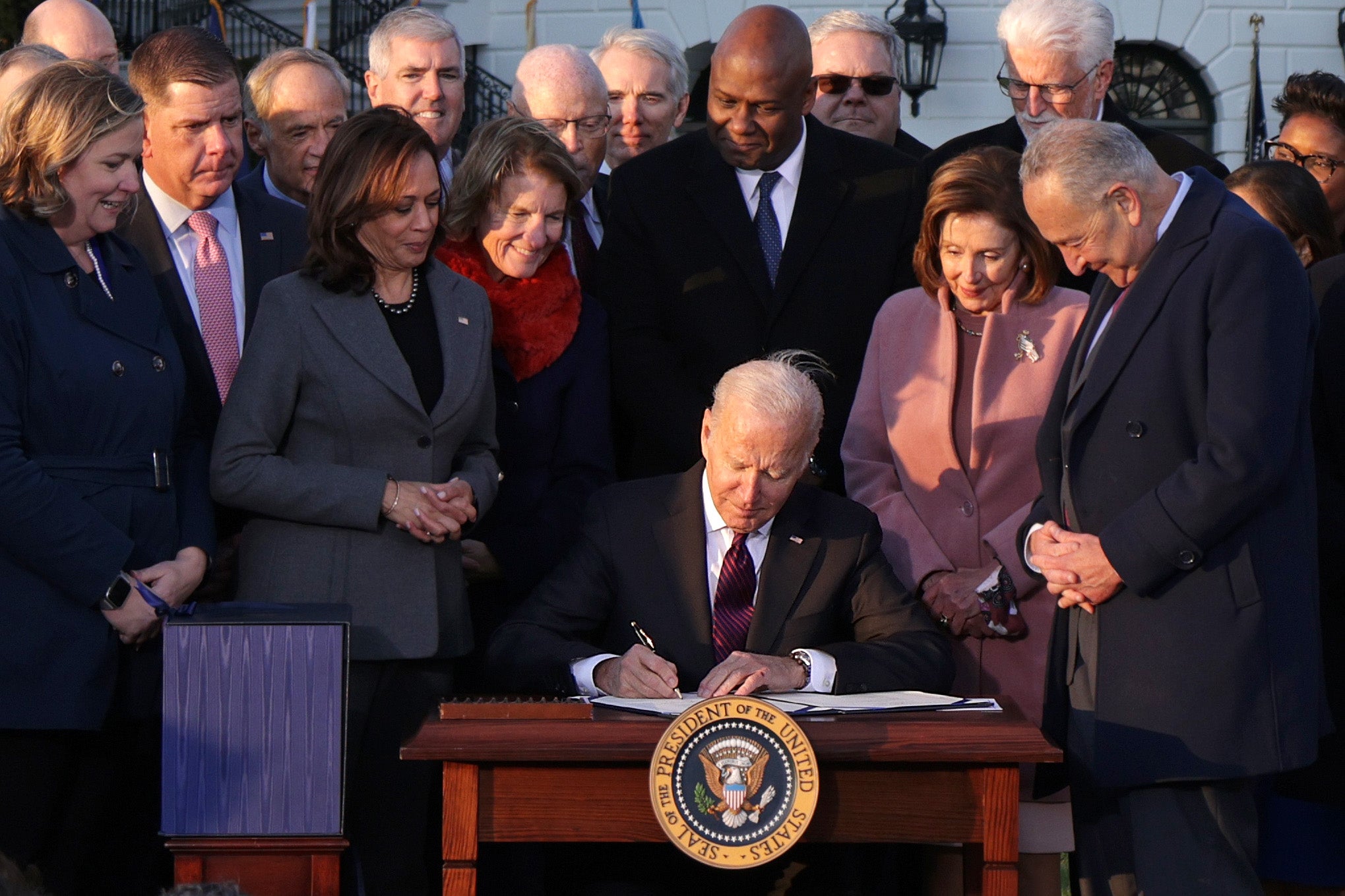
On Nov. 15, 2021, President Biden signed the massive Bipartisan Infrastructure Law. Two years later, projects are getting underway across the country.
It took a year to create the programs authorized by the bill, Buttigieg said, including several that were multibillion-dollar programs. The White House is excited as it rolls out spending projects.
“Now we’re at the phase where we’re actually moving the money at an increasingly fast pace so that we can get the dirt flying around the country, and as we go into next year’s construction season, you’re gonna see more and more projects underway,” he said, noting that there are 31,000 projects in progress in the transportation sector alone.
Buttigieg said some of the planned projects are relatively simple ones that can be done in one season, but others “are multiyear efforts that I call the cathedrals of our infrastructure. What I’m really proud of is that these things are making a difference in communities of every type, every size and every economic makeup across the U.S.”
When I asked him what single project he’s been most excited to see either completed or begin, Buttigieg said, “As a frequent user of O’Hare, I’m pretty excited about what’s coming there, and rehabilitating Terminal 3.”
He also said he was happy about the funds for a new terminal for Pittsburgh International Airport (PIT).
Buttigieg also pointed to projects “that hundreds of thousands of people a day count on in places like Maryland, outside of Baltimore and New York. Those are exciting, but I have to tell you some of the most rewarding ones are ones that won’t make national headlines but mean the world where they are happening.”
He gave TPG another airport example that’s a bit smaller in scale: Chamberlain Municipal Airport in Chamberlain, South Dakota. The town of around 2,500 people has an airport “and it’s a very important one, even though there’s no airlines going there. It’s important because of the medevac missions that fly people to the nearest hospital almost every day.”

Buttigieg said the town’s general aviation terminal is a mobile home, and the town has been trying to upgrade it for years. Now, with funding coming from this infrastructure package, the town will receive a grant that will help create a sturdy, proper building for the airport.
Train funding and high-speed rail’s future
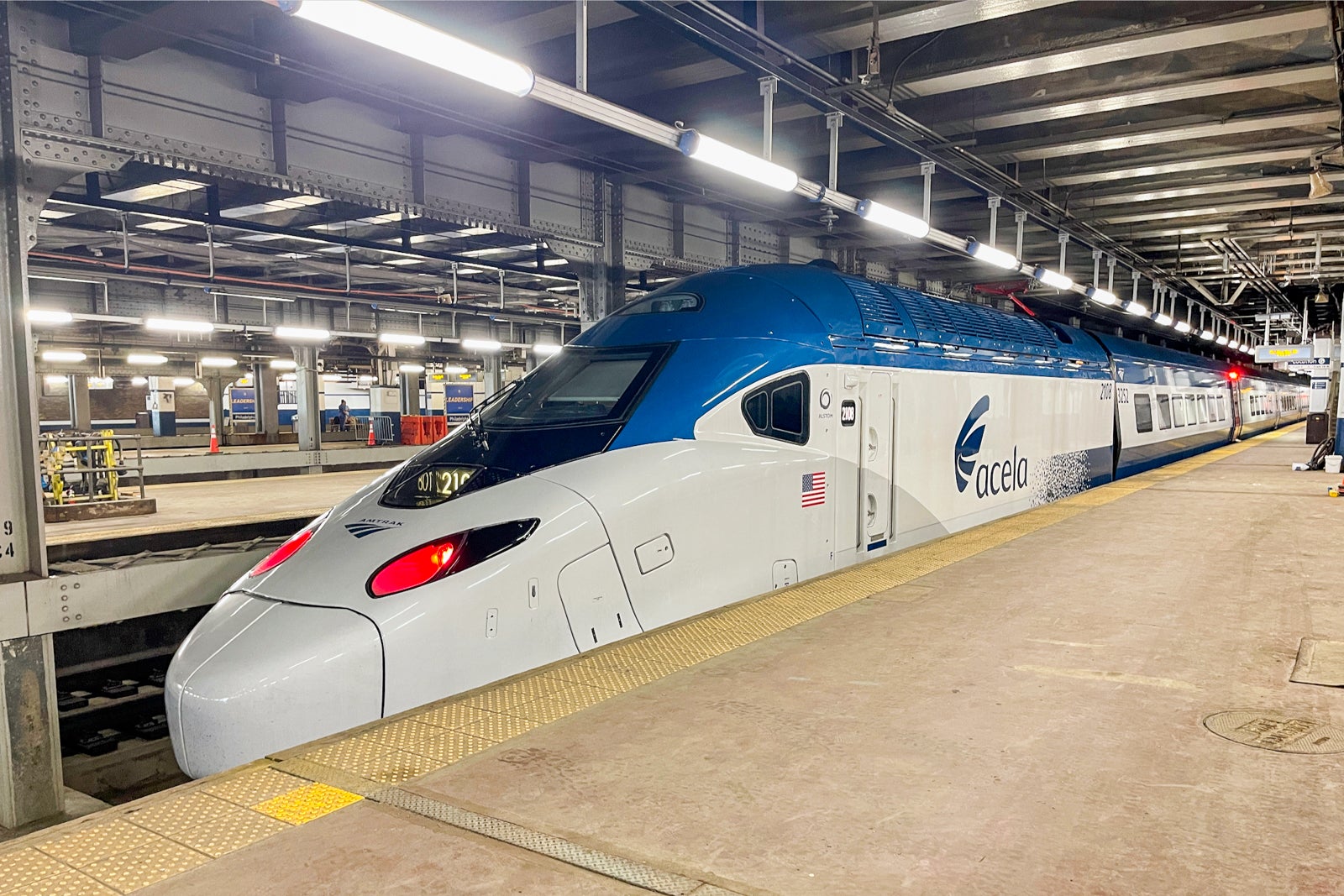
Buttigieg said he’s very excited about the future of trains in America. Specifically, he pointed out three categories related to train infrastructure: maintenance, adding or restoring service that was lost, and domestic high-speed rail service.
Related: Amtrak orders more new trains to meet growing demand
“Taking care of the basics, improving the reliability of our rail network by investing in maintenance. It should’ve been done a long time ago,” he said. “The Hudson River tunnel represents the finest, most state-of-the-art engineering of the Teddy Roosevelt administration.”
That’s in reference to the massive project now underway to build a new tunnel under the Hudson River between New York and New Jersey. The current tunnel carries Amtrak and New Jersey Transit passenger trains and is woefully out of date. The Hudson Tunnel Project will eventually create a new two-track tunnel, allowing for faster and more frequent train trips.

The Biden administration has provided $66 billion in funding for rail projects across the U.S., such as modernizing Amtrak operations centers. That’s the largest investment in passenger service since the creation of Amtrak in 1971, according to the White House.
Amtrak is using the funds to help modernize its fleet and fix longstanding repair issues. It’s also fueling a push to expand passenger rail service to new routes around the country and speed up service on existing lines, as TPG reported back in June.
The effort includes the overhaul of the nearly 150-year-old Baltimore & Potomac Tunnel, another chokepoint in the Northeast Corridor.
“Rehabilitating (it) will mean the trains don’t have to slow down as they today do to negotiate that space,” Buttigieg said. “So we’re taking care of the basics.”

The second part of the DOT push is to add or restore lost train service, with Buttigieg saying, “A great example of that is the Gulf Coast.”
Amtrak service between Mobile, Alabama, and New Orleans ended after Hurricane Katrina swept through the area nearly 20 years ago. Now, thanks to Department of Transportation funding, Amtrak will resume service on the line with two daily trains between New Orleans and Mobile starting as soon as next year.
“We think it’s gonna unlock a lot of economic potential on the Gulf Coast,” Buttigieg said.
Related: A 1st look at Amtrak’s spiffy new Acela trains
Buttigieg talked about the future of high-speed rail, too. He said he believed progress on this front would be really exciting, especially for Americans who have traveled to other countries, seen high-speed rail and wondered why the U.S. doesn’t have something similar.
He also acknowledged the infrastructure bill wouldn’t be a panacea for bullet trains everywhere.
“Now, the infrastructure package is just a down payment on high speed. It’s not gonna build everything everywhere,” he said. “But we believe it is with the dollars that we have in that package we can contribute to two or three specific places in the U.S. where American travelers in this decade will be able to begin to experience a level of high-speed service that the most advanced economies except us count on, and we should be able to count on it, too.”

The administration has set aside $12 billion for intercity rail, including high-speed rail projects. Brightline’s proposed Las Vegas-to-Los Angeles train and a high-speed train system currently under construction in California’s Central Valley are among the projects that will likely benefit.
Related reading:
- When is the best time to book flights for the cheapest airfare?
- The best airline credit cards
- What exactly are airline miles, anyway?
- 6 real-life strategies you can use when your flight is canceled or delayed
- Maximize your airfare: The best credit cards for booking flights
- The best credit cards to reach elite status



